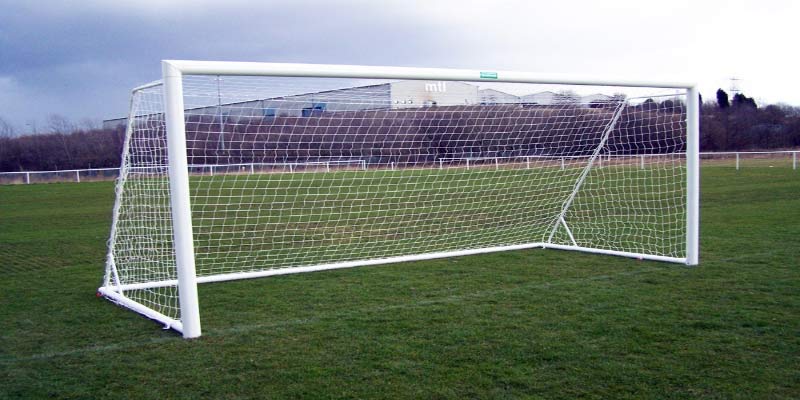
The Unseen Power of the Goal Post: Key to Every Game
The goal post in football is more than just a frame—it’s the stage where pivotal moments happen. From a last-second save to a match-winning goal, this unassuming structure defines the game. Whether you’re a player or a fan, the goal post is where the drama of football truly unfolds. With platforms like 123B offering insights into every thrilling match, you’ll always be at the heart of the action, witnessing the moments that make football unforgettable.
Goal Post and Regulations in Football
Understanding the regulations governing goal posts isn’t merely an academic exercise; it’s essential for anyone involved in football—from players and coaches to fans and officials. These regulations ensure consistency and fairness across competitions, contributing to a level playing field.
Regulations on the size of goal posts
The standard dimensions for goal posts in football are well-defined by FIFA and other governing bodies. Typically, adult professional goal posts must stand 2.44 meters high and 7.32 meters wide. These measurements are crucial in maintaining uniformity in professional play globally.
Interesting discussions often arise regarding the relevance of these specific measurements. Some argue that minor adjustments could make matches even more exciting, while others contend that altering the dimensions would compromise the integrity of the sport. Regardless, the established regulations have stood the test of time, serving as the framework within which the beautiful game is played.
Rules and fouls related to the goal post
Fouls related to the goal post often arise during contentious moments in matches. Players are penalized for interfering with the goal post or for unsportsmanlike behavior that occurs near the area. For example, if a player uses the goal post as leverage to jump higher or gain an unfair advantage, referees may call a foul, potentially impacting the outcome of the match.
Moreover, goal posts can inadvertently become involved in injuries. Defenders and attackers alike may collide with the posts when vying for control of the ball, leading to dangerous situations. This highlights the importance of observing proper conduct around goal posts and ensuring that players prioritize safety.
The Importance of Goal Post in Critical Situations
The moment of truth in any football match often revolves around key opportunities to score—or to prevent scores. The goal post stands tall through these dramatic instances, playing an indispensable role in the ebb and flow of the game.
Goal post in scoring and defensive situations
The interplay between the attacking and defending teams illustrates the goal post’s importance. When an attacker eyes the goal, the tension builds as they prepare to take their shot. Here, the goal post becomes the final frontier: will the ball find the back of the net, or will it ricochet off the post, giving rise to a counterattack?
Defensively, the goal post acts as a last line of defense. Goalkeepers develop tactics and instincts to protect this structure. Their positioning, diving techniques, and decision-making skills are often honed specifically to respond to varied situations surrounding the goal post.
In times of heightened pressure, such as during penalty shootouts, the goal post takes on a heavier burden. Every shot becomes a moment fraught with intensity, where skill meets chance. As players stand poised to strike, the sheer presence of the goal post creates a backdrop against which dreams can be realized or dashed.
Role of the goal post in key matches
Throughout football history, several iconic moments have revolved around goal posts. Think of penalty shootouts in World Cups or decisive league matches where a single goal could mean the difference between victory and relegation. During these climactic moments, the goal post represents the culmination of countless hours of training, strategy, and teamwork.
History has shown us that goal posts can be cruel arbiters of fate. For instance, a ball struck against the post—and subsequently cleared—has led to heartbreaking losses for teams that believed victory was within their grasp. Conversely, a fortunate rebound can shift momentum and energize a team striving to claw back into contention.
The emotional rollercoaster created by the goal post adds to the allure of football. Fans remember the glorious victories that concluded with explosive celebrations around the goal post, while equally painful defeats remain seared in the collective memory of supporters.
Conclusion
The goal post stands as a fundamental pillar of football, laden with symbolism and significance. From its basic role in marking the target for scoring to the complex regulations surrounding its use, it defines the framework within which the game unfolds. The diverse types and materials of goal post reveal the nuances present in different leagues, ensuring that the sport evolves while remaining rooted in tradition.
Equally important is the goal post’s influence on critical match situations. It can inspire hope and despair, offering a microcosm of the broader human experience. As spectators, we find ourselves captivated by the thrill of the chase, the agony of misses, and the ecstasy of triumphant goals.


